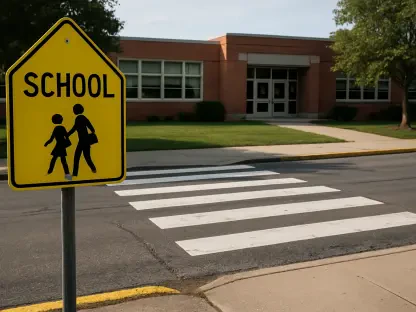In an era where the cost of higher education continues to spiral out of control, leaving millions burdened with student debt, the concept of tuition-free colleges emerges as a potential lifeline for both individuals and economies. This innovative approach to education promises not only to democratize access to learning but also to forge a direct pathway to a more robust and skilled workforce capable of meeting the demands of modern industries. As global markets increasingly pivot toward knowledge-based sectors, the pressing question looms: can tuition-free colleges serve as the cornerstone for sustainable economic growth and widespread opportunity? This article delves into the transformative potential of these institutions, examining their impact on economic vitality, social equity, workforce preparedness, funding challenges, investment prospects, and global trends. By exploring these facets, a clearer picture forms of whether such programs could indeed shape the future of labor markets and societal progress.
Economic Powerhouse: Driving Growth Through Access
The economic advantages of tuition-free colleges extend far beyond individual benefits, positioning them as catalysts for broader financial growth. Recent data highlights that programs like New York’s Excelsior Scholarship and Tennessee’s Promise have significantly increased enrollment among low-income students by 15-20%, while also driving a 12% rise in graduate employment within local job markets. Projections from the World Economic Forum underscore an even greater potential, estimating that expanding these initiatives globally could inject trillions into the world’s GDP by 2030, alongside the creation of millions of jobs. This compelling evidence suggests that investing in free education yields substantial returns, particularly for economies in desperate need of skilled labor to fuel innovation and productivity. The ripple effect of such programs transforms not just personal incomes but entire regional economic landscapes, making a strong case for their strategic importance.
Moreover, the fiscal benefits are not merely theoretical but grounded in measurable outcomes that reshape communities. When students graduate without the weight of debt, they are more likely to invest in homes, start businesses, and contribute to local economies at a faster rate. This increased economic activity generates higher tax revenues, which can be reinvested into public services and infrastructure, creating a virtuous cycle of growth. Beyond immediate gains, tuition-free education addresses long-term challenges like workforce shortages in critical industries, ensuring that economies remain competitive on a global stage. The data paints a vivid picture: removing financial barriers to higher education is not just a policy choice but a powerful economic strategy that can redefine prosperity for generations. As more regions adopt these models, the potential for widespread economic revitalization becomes increasingly tangible, offering a blueprint for sustainable development.
Social Equity: Leveling the Educational Playing Field
Tuition-free colleges stand as a formidable tool in dismantling systemic inequities that have long plagued access to education. In nations like Germany and Norway, where free higher education is the standard, graduates from disadvantaged backgrounds are significantly more likely—by as much as 30%—to secure stable, well-compensated positions compared to their counterparts in fee-based systems. In the U.S., states such as Massachusetts and Oregon have witnessed a remarkable 25% surge in enrollment among nontraditional students, including working parents and part-time learners, thanks to tuition-free initiatives. This shift not only broadens access but also empowers underrepresented groups to break cycles of poverty, fostering a more inclusive society. The societal impact of such programs is profound, as they create opportunities where barriers once stood, reshaping the fabric of communities.
Additionally, the benefits extend to aligning educational outcomes with societal needs, amplifying the impact on equity. Graduates from tuition-free programs often gravitate toward essential fields like healthcare, public service, and STEM, addressing pressing global challenges such as climate change and medical access. This trend, supported by studies showing an 18% higher likelihood of entering critical sectors, ensures that the advantages of free education are not limited to individual success but contribute to collective well-being. By prioritizing access for those historically excluded, these initiatives help build a workforce that reflects diverse perspectives, driving innovation and cultural understanding. The ripple effects are felt across generations, as educated individuals uplift their families and inspire future learners, proving that tuition-free colleges are not just about degrees but about building a fairer, more connected world.
Workforce Alignment: Bridging Skills and Industry Needs
Tuition-free colleges are uniquely positioned to prepare graduates for the evolving demands of the labor market, ensuring that education translates directly into employability. Research indicates that individuals completing these programs are disproportionately inclined to pursue careers in high-demand areas such as technology, public service, and healthcare, directly addressing critical workforce shortages. This alignment between educational offerings and industry requirements means that communities benefit from a steady supply of qualified professionals ready to tackle real-world challenges. By focusing on practical skills and career readiness, these institutions help create economies that are not only more resilient but also better equipped to adapt to rapid technological and industrial shifts, reinforcing their role as vital engines of progress.
Furthermore, the strategic design of many tuition-free programs emphasizes partnerships with local businesses and industries, enhancing their effectiveness in meeting specific labor needs. These collaborations often result in tailored curricula that equip students with the precise skills employers seek, reducing the gap between academic training and workplace expectations. Such initiatives also foster internships and apprenticeships, providing hands-on experience that boosts employability upon graduation. The outcome is a workforce that is not just educated but immediately productive, contributing to economic stability and growth. As global competition intensifies, the ability of tuition-free colleges to produce job-ready graduates offers a competitive edge, ensuring that regions adopting these models are better positioned to thrive in a dynamic economic landscape.
Funding Hurdles: Balancing Vision with Viability
Despite their promise, tuition-free colleges face significant challenges in securing sustainable funding, a hurdle that can undermine even the most well-intentioned programs. Historical examples reveal instances where initiatives have struggled or shuttered due to financial constraints, highlighting the necessity for robust fiscal planning. However, innovative approaches offer a path forward, such as Michigan’s Promise Zones, which leverage tax-increment financing to support educational access. Similarly, Tennessee’s model of public-private partnerships demonstrates how collaboration can alleviate budgetary pressures. These examples underscore that while the challenge of funding is formidable, creative solutions exist to ensure that the vision of free education does not falter under economic strain, providing a roadmap for scalability.
Technology also plays a pivotal role in addressing financial sustainability, offering cost-effective alternatives to traditional educational delivery. Online platforms and partnerships with organizations like edX enable tuition-free colleges to provide stackable credentials and micro-credentials, shortening the time to employment and diversifying revenue streams. These digital tools reduce overhead costs while expanding access to education, making programs more viable in the long term. Additionally, such innovations attract investment from private sectors interested in supporting scalable, tech-driven solutions. While funding remains a complex issue, the combination of policy ingenuity and technological advancement suggests that tuition-free colleges can overcome these obstacles, ensuring their benefits reach a broader population without compromising financial stability.
Investment Opportunities: A Strategic Sector for Capital
For stakeholders looking to blend social impact with financial returns, tuition-free colleges present a compelling investment frontier. Public-private partnerships, exemplified by the Kalamazoo Promise with its substantial corporate backing, illustrate the potential for high-impact initiatives that yield both societal and economic dividends. Meanwhile, the EdTech sector is experiencing remarkable growth, with companies supporting tuition-free models achieving impressive compound annual growth rates that attract discerning investors. Even policy advocacy funds, which bolster state and federal support for educational initiatives, open new avenues for capital allocation. This landscape reveals that investing in free education is not merely philanthropy but a calculated move in a rapidly evolving market.
Beyond traditional models, the integration of technology and education creates additional opportunities for investors to engage with tuition-free colleges. Firms that develop digital learning tools or platforms for skill certification are increasingly vital to these programs, offering scalable solutions that enhance educational reach and efficiency. Such investments not only promise financial returns but also align with broader goals of workforce development and social equity, appealing to impact-focused portfolios. State-backed initiatives, often supported by significant budgets, further reduce risk for private investors by ensuring a stable foundation for growth. As the education sector continues to transform, tuition-free colleges stand out as a dynamic area where strategic investments can drive meaningful change while generating sustainable profits.
Shaping Tomorrow: Global Shifts Toward Accessible Learning
Globally, a notable trend is emerging: accessible education is increasingly recognized as a fundamental driver of economic and social advancement. From policymakers to academic researchers, there is a growing consensus that tuition-free colleges are not a luxury but a necessity for fostering equitable growth and workforce strength. This shift reflects a broader understanding that investing in human capital through free education yields substantial long-term benefits, reshaping labor markets and reducing inequality. While risks such as funding shortfalls persist, the momentum toward prioritizing educational access suggests a future where economic vitality and social fairness are intertwined, offering a new lens through which to view global progress.
This global movement also highlights the adaptability of tuition-free models to diverse cultural and economic contexts, amplifying their potential impact. Nations and regions are tailoring these programs to local needs, whether through government funding, corporate sponsorships, or community-driven initiatives, demonstrating their versatility. The shared commitment to education as a public good signals a paradigm shift, where the value of a skilled, inclusive workforce outweighs short-term financial concerns. As more countries embrace this approach, the collective knowledge base expands, fostering innovation and collaboration on a worldwide scale. The trajectory is clear: tuition-free colleges are poised to redefine how societies prepare for future challenges, ensuring that opportunity is no longer bound by financial barriers.









